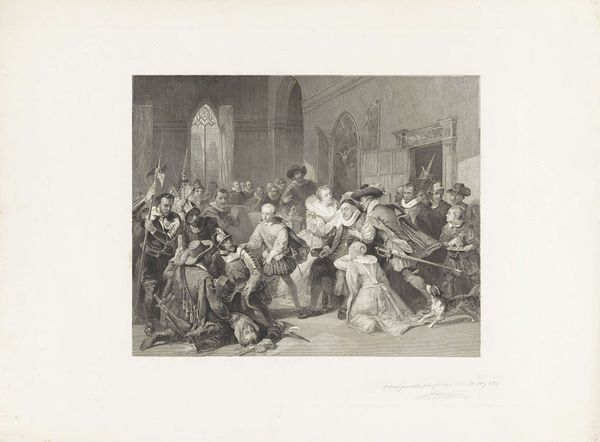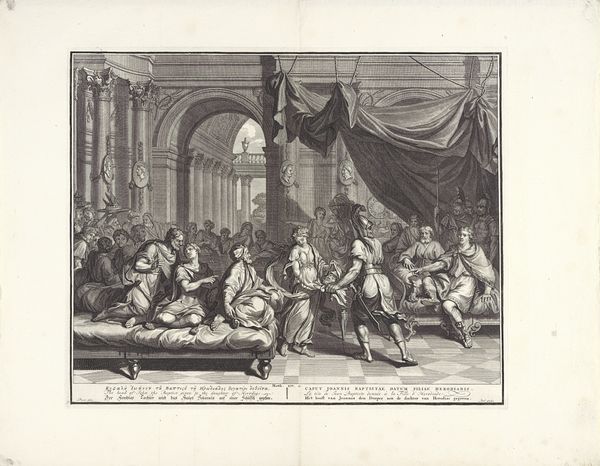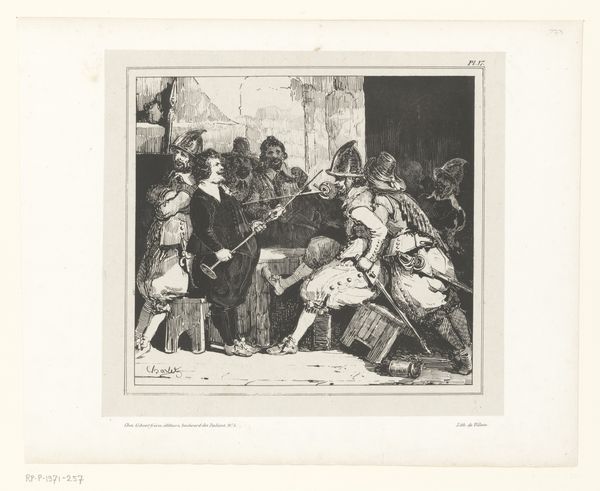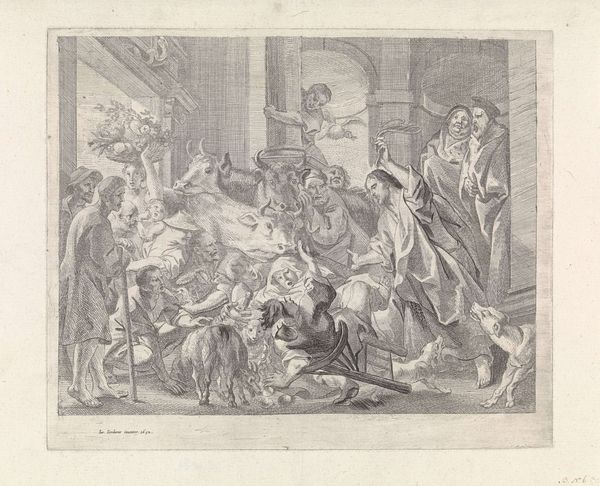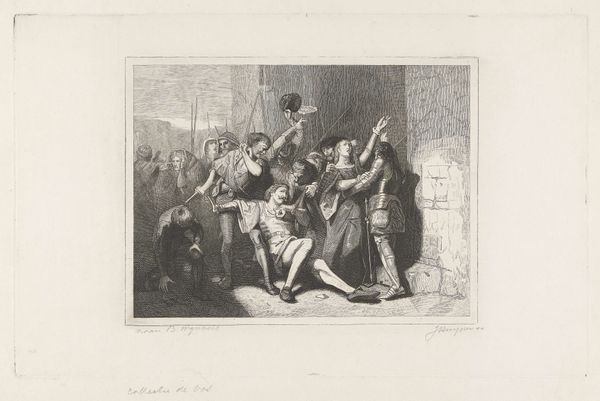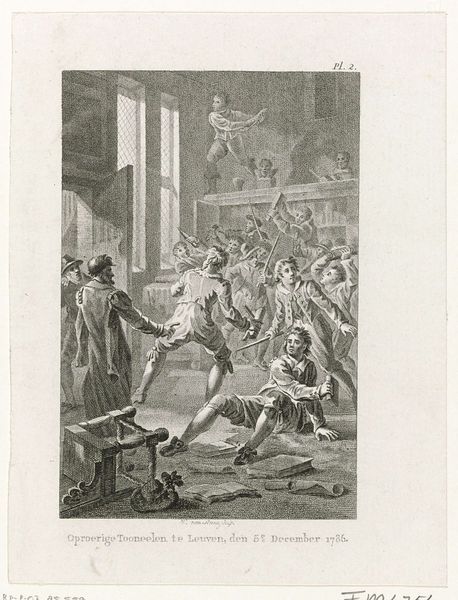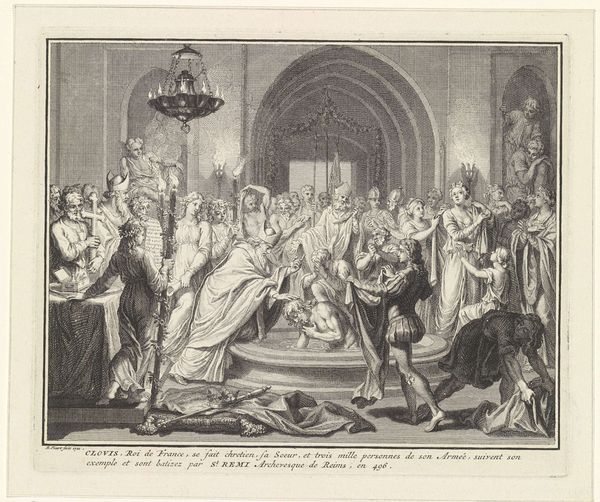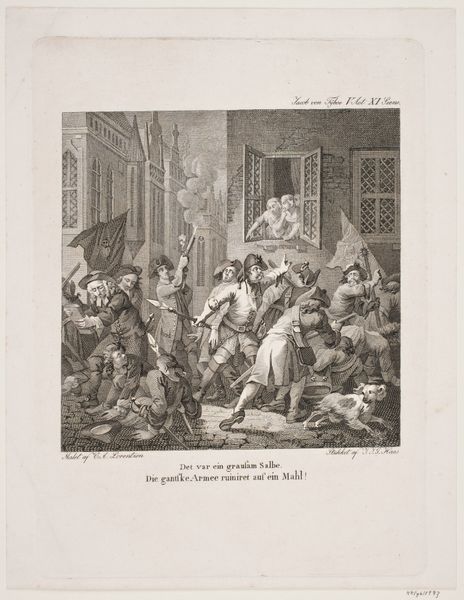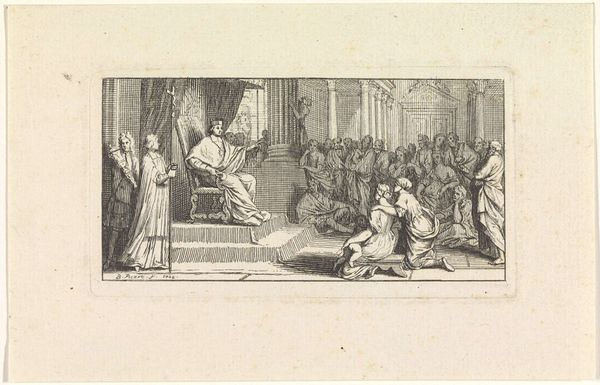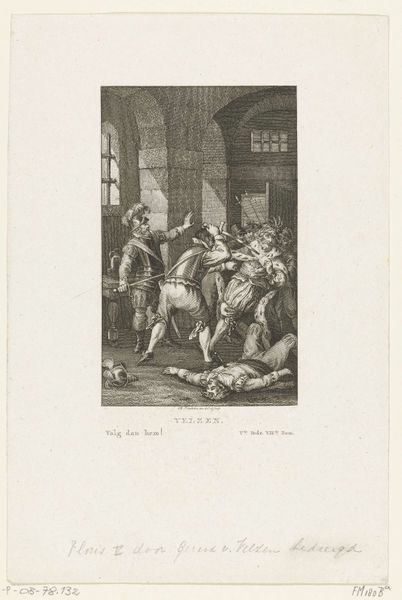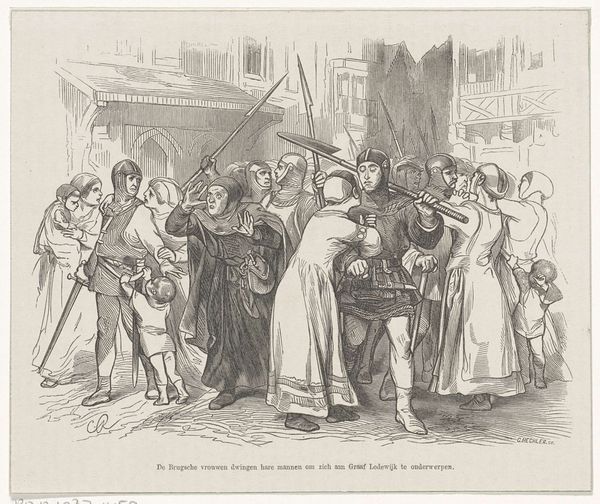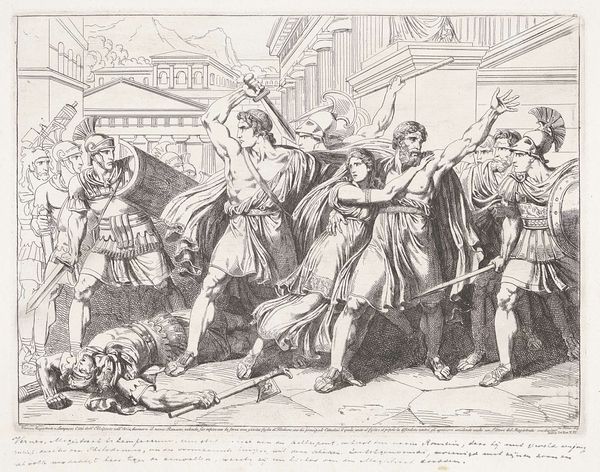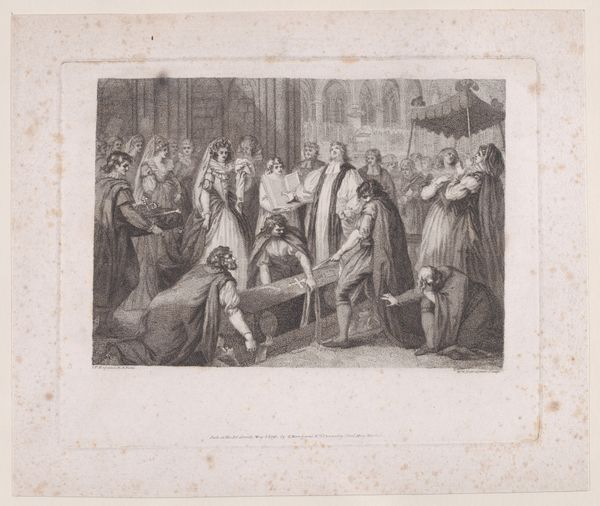
Aanslag van Jean de Jauregui op prins Willem I, 18 maart 1582 1853
0:00
0:00
johannwilhelmikaiser
Rijksmuseum
print, etching, engraving
#
aged paper
#
narrative-art
# print
#
etching
#
light coloured
#
old engraving style
#
old-timey
#
history-painting
#
engraving
#
realism
Dimensions: height 415 mm, width 490 mm
Copyright: Rijks Museum: Open Domain
Curator: This print, crafted by Johann Wilhelm Kaiser in 1853, depicts a pivotal moment in history: "The Attack of Jean de Jauregui on Prince William I, March 18, 1582." Editor: It's a chaotic scene. A light-colored engraving style gives it an almost ghostly quality, but the subject matter is violent and unsettling. It reminds me of those fleeting, intense moments captured in history. Curator: The piece definitely pulls us into a fraught narrative. The assassination attempt itself is laden with symbolism, wouldn't you say? Notice how light and shadow play upon the figures. Even in Kaiser’s rendering decades later, the echoes of religious conflict resonate powerfully. The Dutch revolt was not only political; it had deep spiritual undertones. Editor: Absolutely, and this work, now held at the Rijksmuseum, becomes part of a much larger historical record. Its stark realism also points to shifting social perspectives. The print serves a public function – educating, perhaps warning, reminding viewers about the ever-present potential for political upheaval. Who was Kaiser aiming to reach, and what was he saying to them? Curator: Considering that this print captures an historical event that happened 250 years before Kaiser's work was created, it raises questions about why this subject still resonated in 1853. The very act of recreating the event through visual representation helps keep cultural memory alive. It shows the lasting psychological impact events have on national consciousness. Editor: Precisely. And prints like this were circulated widely, amplifying their effect. Each viewer then reinterpreted the message in their own socio-political milieu. Curator: A powerful reminder of how historical images retain their charge. It’s always been intriguing to consider the echoes of meaning that persist within them, even across generations. Editor: Indeed. The artist transforms a moment of terror into a visual monument, one we can analyze and perhaps understand more fully through our own modern lens.
Comments
No comments
Be the first to comment and join the conversation on the ultimate creative platform.
